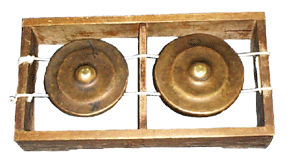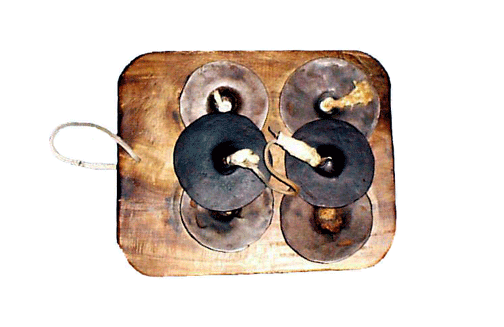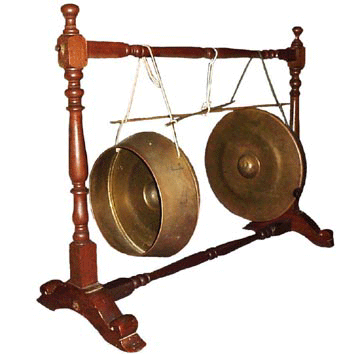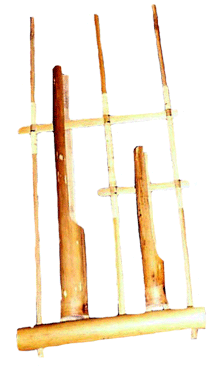|
|
MUSICAL INSTRUMENTS OF PENINSULAR MALAYSIA | ||
| IDIOFONS | |||
|
Mouse over the left and right segments of the image to hear the anak and ibu Canang.
|
|||
|
Mouse over the left and right segments of the image to hear the Kesi open and closed. The kesi is somewhat similar to the western cymbal. Four small brass discs (two to four inches in diameter) are attached to a wooden block, which is approximately twelve inches square. The kesi is played by striking the fixed discs with two other discs which the performer holds in his hands. In a manner like western cymbals, the discs are either struck briefly together and allowed to ring, or struck together then held closed to achieve a muted sound. |
|||
|
Mouse over the image to hear the Gong. The hand-shaped Malaysian or Indonesian gongs are suspended in pairs from a wooden framework. One gong is slightly larger and is known as the Ibu (parent) the other smaller is the anak (child). |
|||
|
Mouse over the left and right segments of the image to hear ibu and anak Anklung. The anklung is made from bamboo. The hollow bamboo resonates when struck and the length of the bamboo determines its pitch or frequency. The anklung is comprised of two bamboo resonators which are tuned to complimentary notes. Small disks of bamboo are fixed to strike the bamboo resonators. To play the instrument it is shaken, sometimes rapidly or it short bursts. The anklung is made in many different sizes and can therefore produce many tones. Often many musicians will perform using dozens of anklungs in manner similar to western "hand-bell choirs." |



